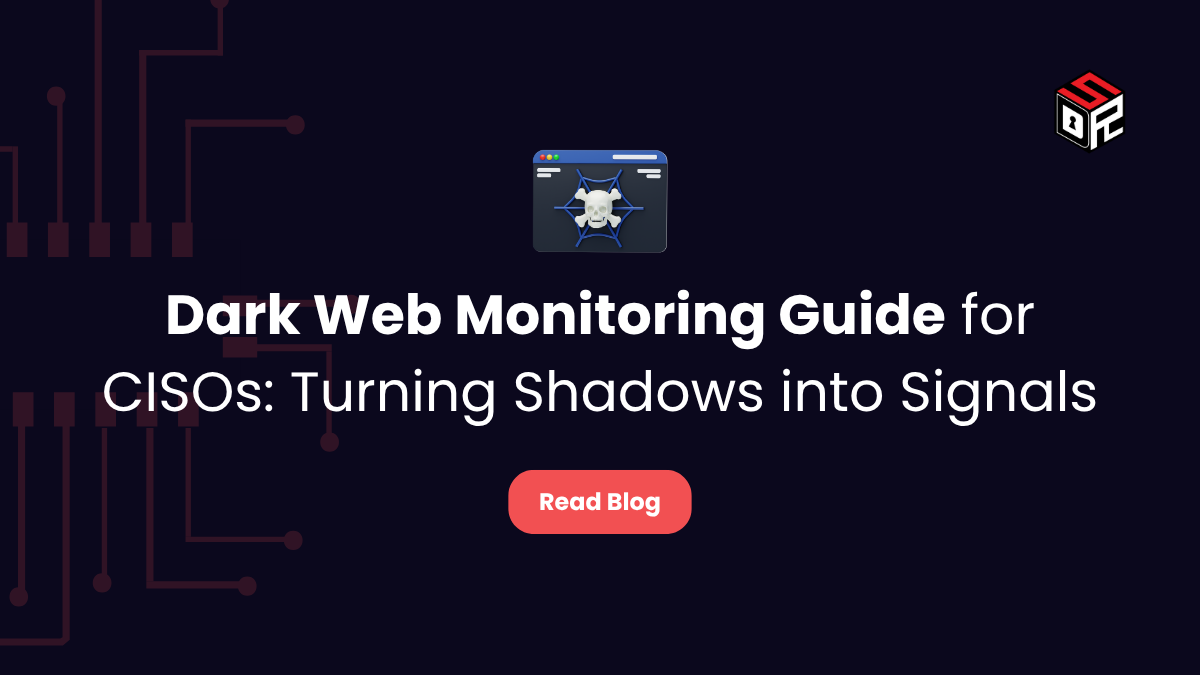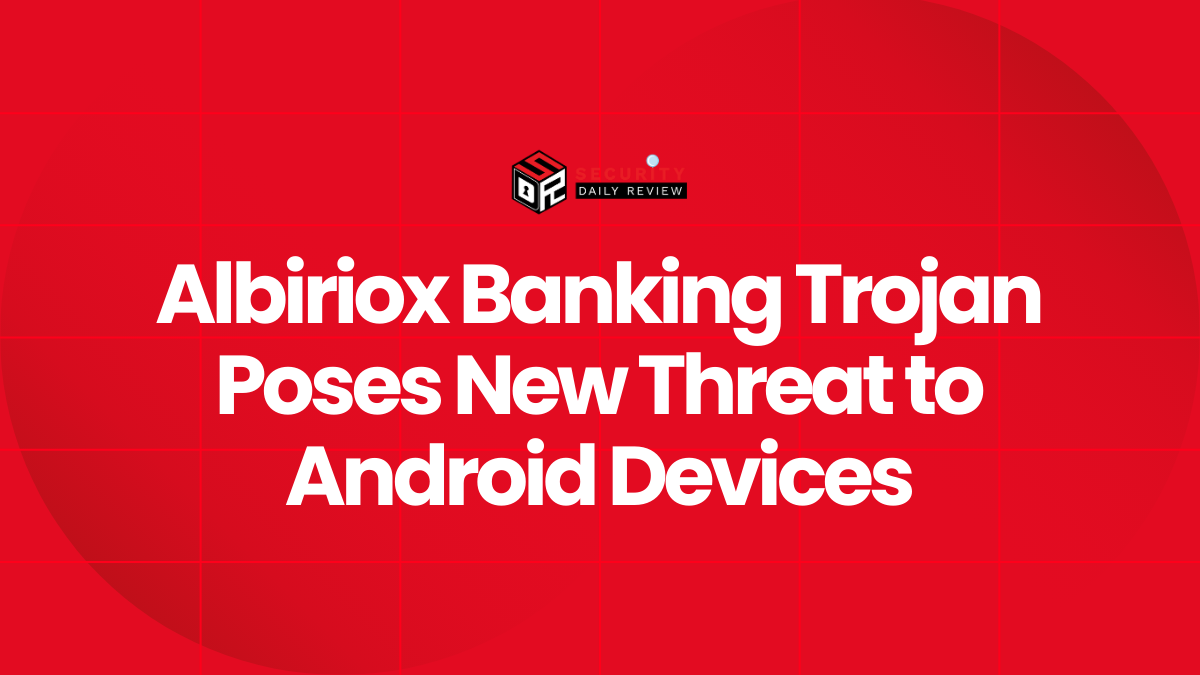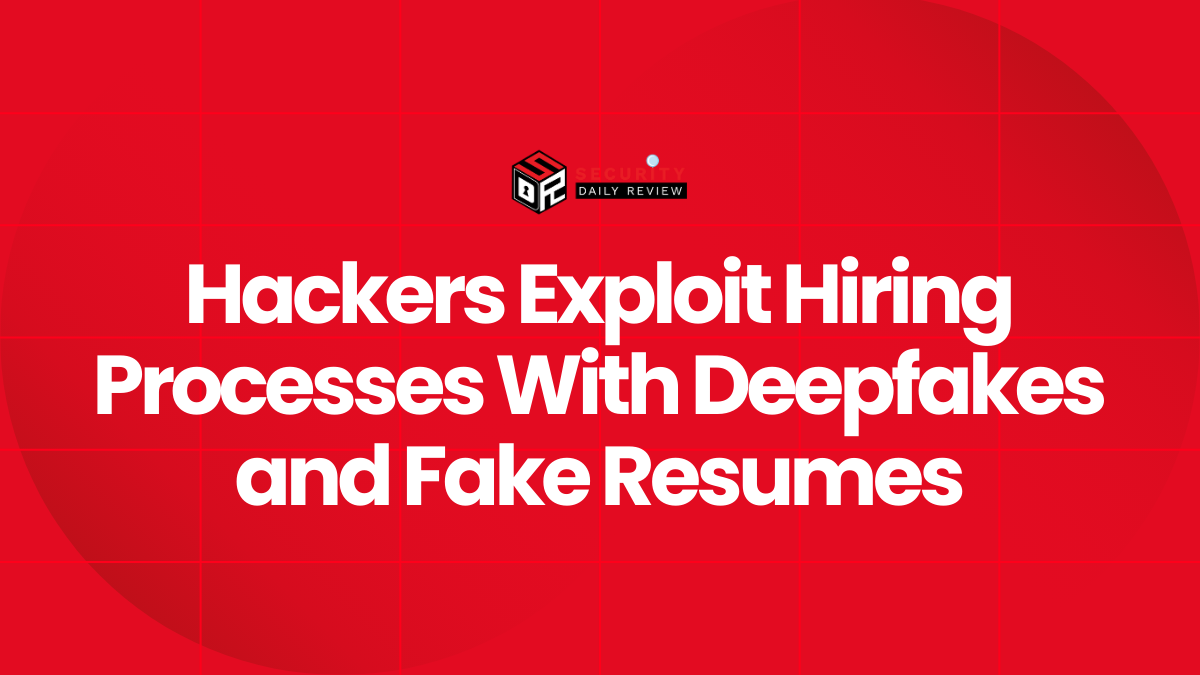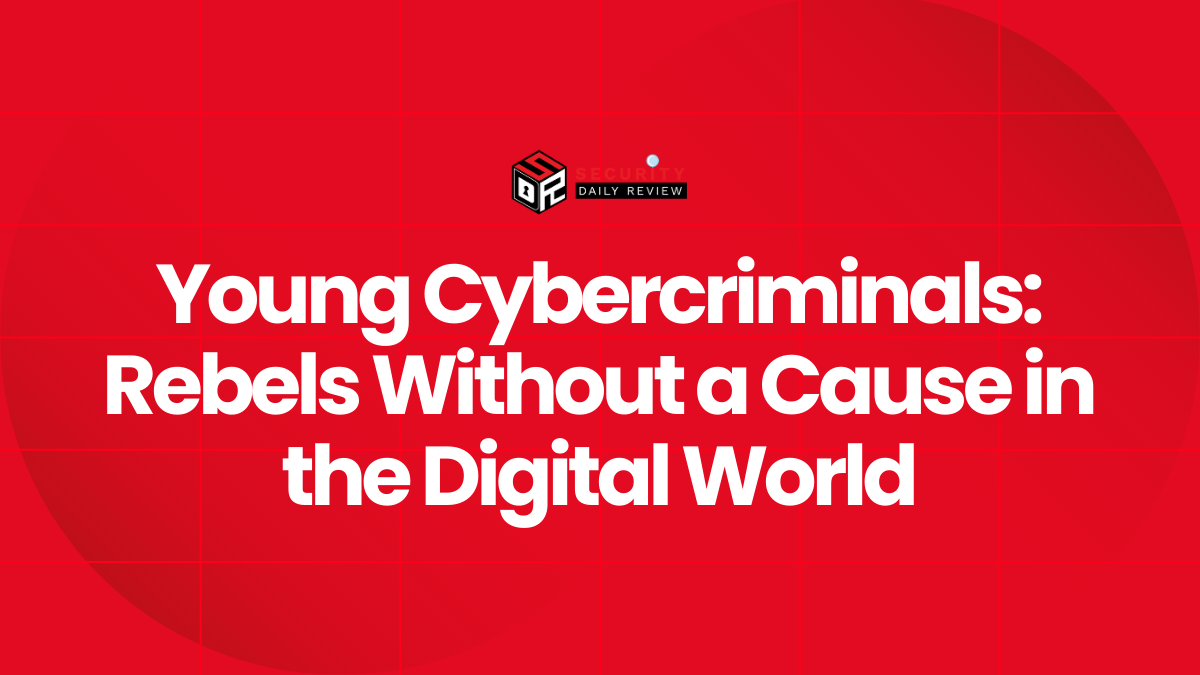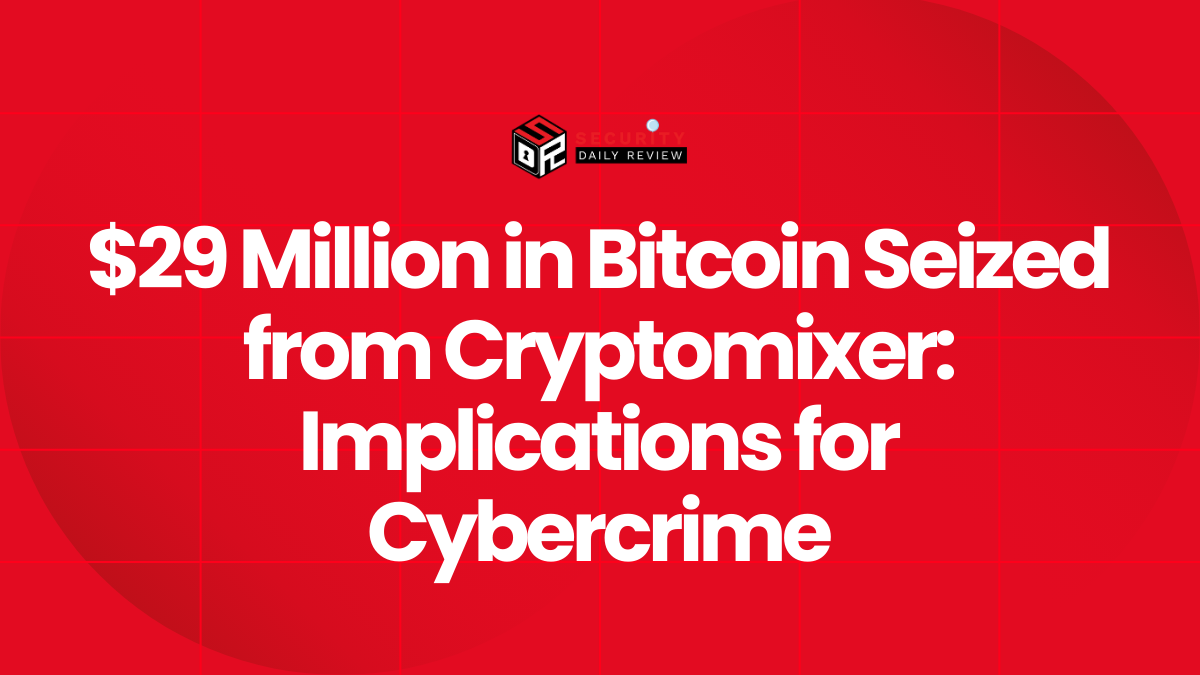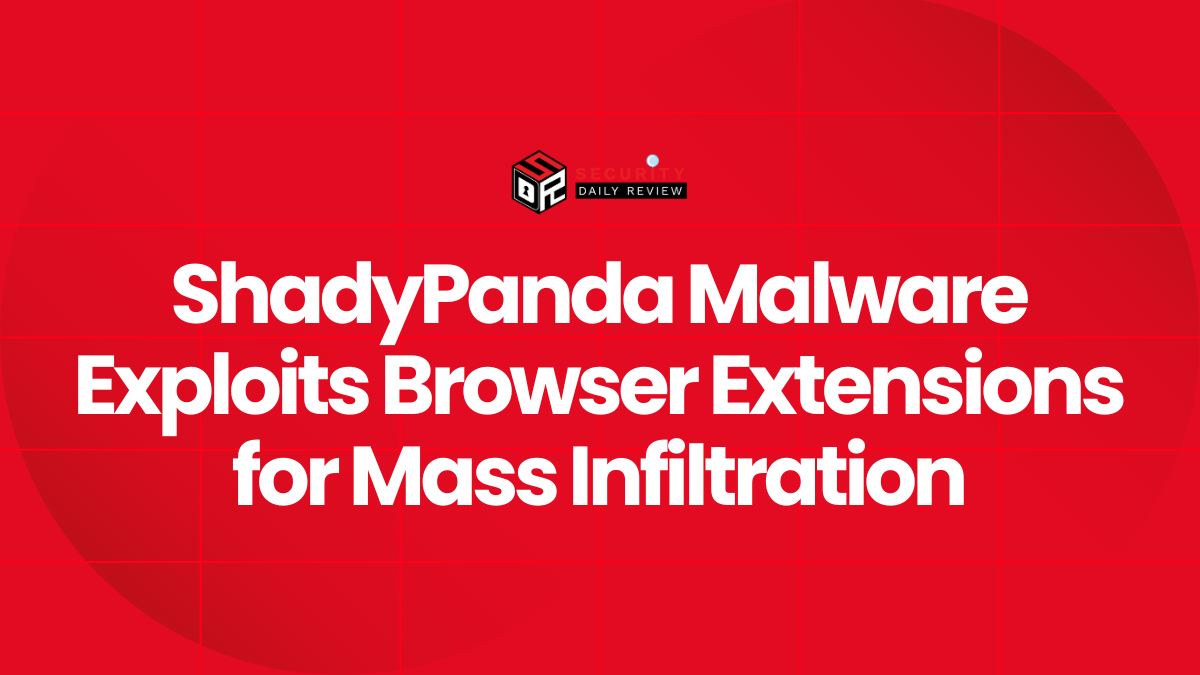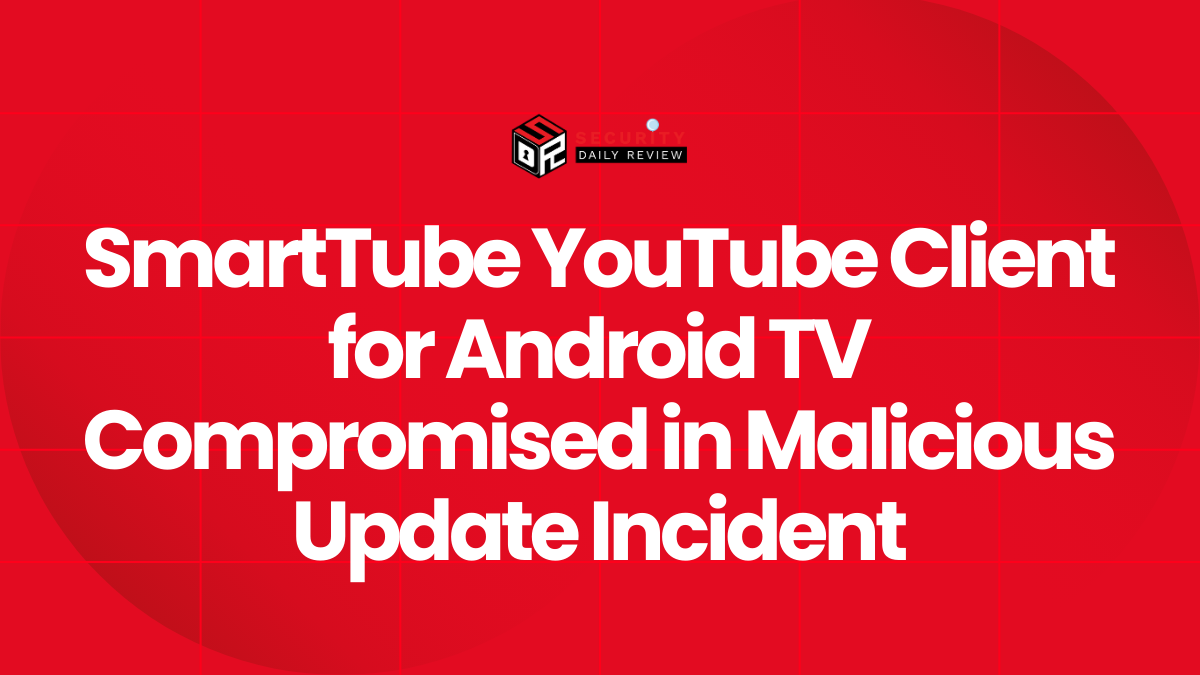The dark web has long been portrayed as a hidden marketplace for stolen data, malware kits, and illicit deals. For security leaders, it is far more than a curiosity—it is an early-warning system that can reveal brewing attacks before they strike.
Most CISOs today invest heavily in endpoint detection, firewalls, and SIEMs. Yet too often, they overlook a critical blind spot: what’s happening in underground forums and encrypted chat channels where cybercriminals collaborate. A credential for sale, chatter about exploiting a new vulnerability, or an offer of remote desktop access could be the first indication that your organization is being targeted.
Ignoring these signals is risky. Cybercriminals are not only faster at monetizing stolen data but also increasingly bold in broadcasting their exploits on the dark web. That means organizations that fail to monitor this ecosystem put themselves at a disadvantage, often reacting to incidents rather than preventing them.
This guide explores why dark web monitoring is no longer optional, what CISOs should be watching, and how to transform intelligence into practical defense. By the end, you’ll have a clear framework for integrating dark web monitoring into your cybersecurity strategy.
Why CISOs Can’t Afford to Ignore the Dark Web
For modern enterprises, the dark web is less of a mystery and more of a mirror. It reflects how much of your organization’s digital footprint has already leaked beyond your control. Stolen credentials, personal employee data, and even entire customer databases often surface here long before an official breach disclosure.
According to IBM’s Cost of a Data Breach Report 2025, the average breach now costs organizations over $5.3 million, and credential theft remains one of the most common initial attack vectors. That number grows significantly when executives are targeted, since their accounts unlock access to financial systems, mergers-and-acquisitions discussions, and intellectual property.
Dark web chatter isn’t limited to stolen data. Threat actors increasingly advertise initial access for sale—credentials, VPN logins, or remote desktop access that provide a foothold inside corporate networks. For CISOs, spotting these listings early can mean the difference between neutralizing a threat and dealing with a full-scale ransomware attack.
There’s also a reputational dimension. When customer data or executive emails are exposed on dark web forums, the damage isn’t just financial—it erodes trust. In industries like healthcare and finance, where confidentiality is paramount, that loss of trust can take years to repair.
Ignoring the dark web doesn’t make it go away. It only makes your organization blind to one of the most active threat intelligence ecosystems. For CISOs tasked with anticipating risks, dark web monitoring is not about curiosity—it’s about survival.
What Exactly is the Dark Web (and What it Isn’t)
The term “dark web” often sparks images of anonymous hackers, shadowy deals, and encrypted marketplaces. While some of that is true, much of the mystique comes from misunderstanding. To build an effective monitoring strategy, CISOs and IT leaders first need to separate fact from myth.
The internet can be divided into three layers:
- Surface Web – The part indexed by search engines like Google. Company websites, news articles, and social media live here.
- Deep Web – Legitimate content not indexed by search engines, such as medical records, corporate intranets, or password-protected databases.
- Dark Web – A small portion of the deep web, accessible only through specialized tools like Tor or I2P. This is where cybercriminals conduct business, post leaks, and sell access to compromised systems.
Contrary to popular belief, not everything on the dark web is illegal. Journalists, activists, and even government agencies use it for secure communication. But it’s also where ransomware gangs, initial access brokers, and data leak forums thrive. For CISOs, this makes it both a risk and an opportunity.
The dark web is essentially an early warning system. When stolen credentials, vulnerability exploits, or insider recruitment ads appear, they provide a preview of attacks in motion. For example, forums often feature stealer logs—packages of usernames, passwords, and session tokens harvested from infected machines. These are often used weeks or months before a major breach becomes public.
In short, the dark web is not some mythical underworld—it’s a parallel economy where cybercriminals trade in stolen trust. The question for enterprises isn’t whether it exists; it’s whether they’re paying attention.
How to Monitor the Dark Web (Tools, Tactics, and Teams)
Dark web monitoring isn’t just about lurking in hacker forums — it’s about systematically collecting signals, verifying them, and acting fast before adversaries strike. To do that well, organizations need the right mix of tools, tactics, and talent.
Tools: Building Visibility into the Underground
At the entry level, free services like Have I Been Pwned let individuals and businesses check whether their email domains have appeared in breach dumps. This is a useful starting point, but enterprise-grade visibility requires deeper coverage.
Platforms such as SpyCloud and DarkOwl continuously scan dark web forums, Telegram channels, and credential marketplaces. SpyCloud specializes in detecting stolen credentials and browser cookies that can be used for account takeover, while DarkOwl provides broader intelligence — from ransomware group chatter to exploit kit sales.
Other commercial players like Flashpoint, Recorded Future, and IntSights provide integrations into SIEM systems, allowing threat intelligence feeds to trigger alerts automatically when relevant data appears.
Tactics: Getting Beyond the Basics
Simply buying a platform isn’t enough. Effective dark web monitoring demands context. Security teams should:
- Track mentions of their corporate domains, IP addresses, and executive names.
- Look for offers of VPN or RDP access, which often signal initial access brokers selling entry into enterprise networks.
- Monitor ransomware leak sites to identify if their industry is being actively targeted.
- Deploy deception tools like honeypots and canary tokens that act as tripwires, alerting teams when fake credentials or files surface in criminal markets.
Teams: Who Should Be in Charge
The best tools won’t help if organizations lack people who can interpret signals. CISOs should assign skilled threat intelligence analysts or contract with Managed Security Service Providers (MSSPs) that specialize in underground monitoring. These experts know how to separate signal from noise, attribute activity to known threat groups, and connect external chatter to internal telemetry.
Crucially, monitoring can’t be siloed. Dark web intelligence must feed into incident response playbooks, identity and access management systems, and vulnerability management priorities. Otherwise, it risks becoming a collection of ignored alerts.
In short, tools can help you see the dark web, but strategy and skilled people help you make sense of it — and respond before it’s too late.
Advanced Tactics: Deception, Honeypots & Community Intelligence
For CISOs looking to go beyond passive monitoring, advanced tactics can significantly strengthen dark web monitoring and overall threat intelligence capabilities. These proactive strategies shift the balance from defense-only to active detection, buying enterprises valuable time against sophisticated attackers.
Deception Technologies: Honeypots and Canary Tokens
Honeypots — decoy systems designed to lure attackers — remain one of the most effective ways to detect unauthorized activity early. By planting realistic but fake systems, accounts, or databases, organizations can spot malicious access attempts before they reach production environments.
Similarly, canary tokens (fake documents, credentials, or API keys embedded with trackers) serve as digital tripwires. If these tokens surface on the dark web or are accessed internally, security teams know something is wrong. Deception strategies are particularly effective at detecting insider threats and advanced persistent threats (APTs) that might otherwise evade traditional defenses.
The Risks and Rewards of Deception
Honeypots are powerful, but they must be implemented carefully. Poorly configured decoys can introduce new vulnerabilities. That’s why some organizations partner with specialized vendors or managed detection and response (MDR) providers who bring tested frameworks. Mature enterprises with internal SOC or DevSecOps teams can build custom honeypots and integrate them directly into SIEM, ensuring alerts feed seamlessly into existing workflows.
Leveraging Community Intelligence
No single company has complete visibility into the dark web. That’s why community-driven intelligence is becoming an essential component of resilience. Private analyst groups, vetted Telegram channels, and Information Sharing and Analysis Centers (ISACs) often share actionable data long before it appears in mainstream reports.
For example, sector-specific ISACs provide early warning about ransomware campaigns or vulnerabilities being weaponized against peers. By combining commercial threat intelligence platforms (like Flashpoint, Recorded Future, or DarkOwl) with peer-to-peer information sharing, CISOs can enrich their monitoring with broader context.
The Value of Collaboration
Deception technologies provide internal early-warning signals, while community intelligence expands external visibility. Together, they create a more holistic cyber defense posture. Instead of waiting to discover a breach after the fact, organizations can anticipate moves by attackers and act preemptively.
In today’s climate, where ransomware groups and access brokers move at alarming speed, combining deception, dark web monitoring, and community intelligence isn’t just advanced security — it’s becoming a necessity.
Integrating Insights into Incident Response
Collecting intelligence from the dark web is only half the battle. The real value comes when this information is integrated into an organization’s incident response (IR) and threat detection workflows. Without this step, dark web monitoring risks becoming a passive reporting exercise instead of an actionable defense strategy.
From Intelligence to Action
When stolen credentials, session tokens, or cloud API keys are discovered on underground forums, the IR team must act immediately. This can include:
- Forcing password resets or re-enrolling multi-factor authentication (MFA) for affected accounts.
- Revoking tokens or resetting exposed keys before attackers can weaponize them.
- Isolating affected systems and initiating forensic investigations to determine the root cause.
A well-prepared playbook ensures these steps can be executed rapidly without confusion.
Automation and Correlation
Leading enterprises integrate dark web intelligence feeds directly into their SIEM platforms. This allows automatic correlation between external alerts and internal telemetry. For example:
- A leaked VPN credential discovered on a marketplace can be cross-referenced with recent login attempts.
- Mentions of an executive’s email address on a forum can be tied to spikes in phishing activity targeting the organization.
This automated linkage transforms fragmented alerts into actionable signals.
Testing and Simulation
Dark web intelligence should also inform adversarial simulations and tabletop exercises. If access brokers are advertising VPN access for your sector, simulate what an attacker would do once inside. This prepares the SOC to recognize early-stage intrusions before ransomware or data theft occurs.
Closing the Loop
Integration also means feedback. Every time dark web data surfaces, the response should feed into security awareness training, patch management priorities, and insider risk strategies. For instance, if multiple employees’ credentials leak through personal breaches, it may justify tighter monitoring of personal device use or stricter password manager adoption.
Why Integration Matters
A 2024 survey of CISOs by ISG found that nearly 58% of organizations struggle to operationalize threat intelligence — collecting data without converting it into meaningful defense. Dark web monitoring without integration risks falling into the same trap. By embedding intelligence directly into incident response frameworks, enterprises can turn outside threats into inside visibility — spotting attacks before they escalate.
Checklist for CISOs
The dark web is no longer just a criminal marketplace—it’s a real-time early warning system for enterprise defenders. By actively monitoring, interpreting, and acting on dark web signals, CISOs can transform threat intelligence into measurable resilience.
To make it practical, here’s a concise checklist that security leaders can embed into their strategies:
1. Establish Visibility
- Deploy dark web monitoring platforms (e.g., SpyCloud, DarkOwl, Recorded Future) for continuous scanning of leaks, forums, and marketplaces.
- Subscribe to ISACs and CERT feeds for sector-specific intelligence.
- Monitor for mentions of company domains, executive emails, IP ranges, and third-party vendors.
2. Operationalize Intelligence
- Integrate dark web data into SIEM to correlate external alerts with internal activity.
- Create incident response playbooks tied to dark web findings (e.g., leaked credentials → automatic reset workflows).
- Conduct adversarial simulations based on tactics observed in underground chatter.
3. Protect High-Value Targets
- Continuously monitor for executive names, personal accounts, and impersonation attempts.
- Extend monitoring to supply chain vendors and MSPs to reduce third-party risk.
- Educate leadership on deepfake and voice-cloning threats.
4. Harden the Perimeter
- Enforce multi-factor authentication (MFA) across all accounts, including personal and SaaS logins.
- Require password managers to eliminate weak or reused passwords.
- Deploy endpoint monitoring on executive and remote devices.
5. Leverage Deception and Community Intelligence
- Use honeypots, canary tokens, and decoy accounts to detect threats early.
- Participate in analyst communities and vetted threat-sharing groups for proactive alerts.
6. Measure and Evolve
- Regularly review intelligence reports and refine monitoring criteria.
- Track time-to-detection and time-to-remediation as key performance indicators.
- Reassess playbooks quarterly to reflect new ransomware tactics, exploits, and IAB activity.

